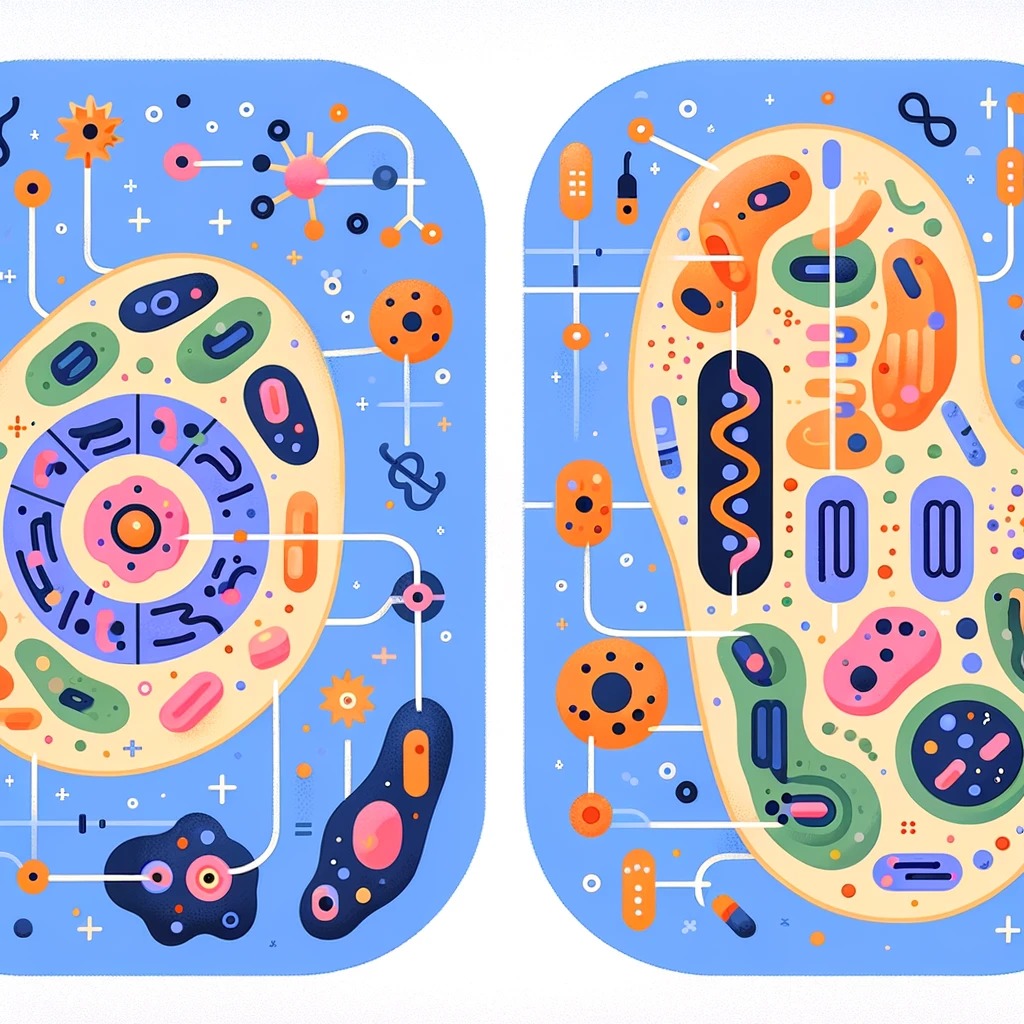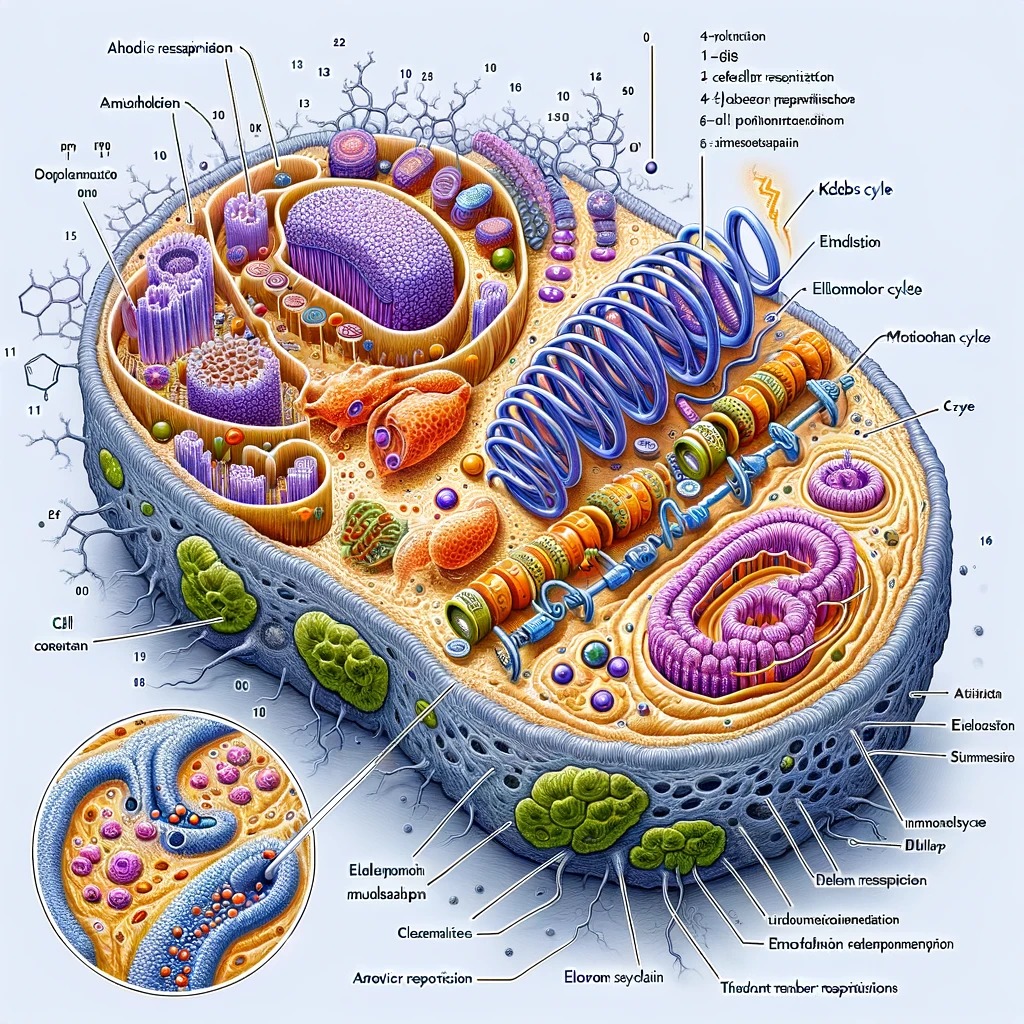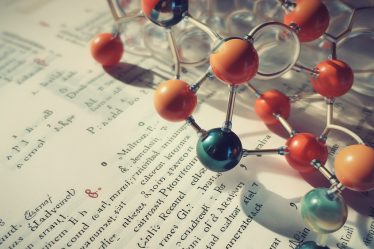
Respiration, in simple terms, is a process that all living organisms carry out to generate energy. It involves breaking food molecules, like glucose, to release energy. This energy is then used for various vital activities that keep organisms alive. In this context, we’ll explore types of respiration, mainly focusing on types of cellular respiration and the cellular respiration equation.
In this article, we’ll explore aerobic and anaerobic respiration, the key phases of respiration, and see how different life forms, including plants and animals, utilize these processes. Understanding respiration is not just a chapter in a biology textbook; it’s a window into the mechanics of life.
For students struggling to grasp these concepts, remember that chemistry and biology can be challenging. Still, they become much more manageable with the right approach, such as tutoring or private lessons. A tutor or a private teacher can offer tailored classes, breaking down complex topics like cellular respiration into understandable segments.
Here’s a Glimpse of What You’ll Learn About Types of Respiration
- What are the two types of respiration: Aerobic and anaerobic respiration.
- Types of cellular respiration: Glycolysis, oxidative phosphorylation, citric acid cycle.
- What types of organisms perform cellular respiration: Examples across different life forms.
- Cellular respiration equation: Fundamental biochemical reactions in respiration.
- Where does cellular respiration take place: Location of processes in cells.
- Cellular respiration in autotrophs: How they synthesize and break down energy.
Are you interested in other subjects? Read top free study guides for Biology, English, French, and Music.
Aerobic vs Anaerobic Respiration: Definition, Equation, and Examples
What are the Two Types of Respiration?
The two main types of respiration are aerobic and anaerobic respiration. Aerobic respiration requires oxygen and is the most familiar process, occurring in many animals, including humans. It is efficient and produces a significant amount of energy. Anaerobic respiration, in contrast, does not require oxygen. It is used by certain microorganisms and in muscle cells under strenuous activity. While less efficient in energy production, it is crucial for survival in oxygen-deprived environments.
Cellular Respiration Equation for Aerobic and Anaerobic Respiration
The cellular respiration equation for aerobic respiration is:
C6H12O6 + 6 O2 → 6 CO2 + 6 H2O + energyIt signifies the breakdown of glucose in the presence of oxygen to produce carbon dioxide, water, and energy. Anaerobic respiration, on the other hand, follows a different pathway. Its general equation can be represented as:
C6H12O6 → energy + lactic acid/alcohol + CO2
This illustrates energy production without oxygen, leading to by-products like lactic acid or alcohol.
Learn everything you have to know about greenhouse gases and nuclear fusion.
Advantages and Disadvantages of Aerobic and Anaerobic Respiration
Aerobic respiration, while energy-efficient, requires a constant oxygen supply, limiting its use in anaerobic environments. It produces a significant amount of energy, about 38 ATP molecules, from one glucose molecule. In contrast, anaerobic respiration is less efficient, generating only about 2 ATP molecules per glucose molecule, but it is crucial for survival in environments lacking oxygen. The by-products of anaerobic respiration, like lactic acid in muscles or alcohol in yeast fermentation, can affect the organism and its environment.
Examples of Organisms that Use Aerobic or Anaerobic Respiration
Organisms performing aerobic respiration include most animals, plants, and many bacteria. For example, humans utilize aerobic respiration for most of their energy needs. Anaerobic respiration is employed by certain bacteria, yeasts, and muscle cells under strenuous exercise. Yeasts, for instance, perform anaerobic respiration during fermentation, producing alcohol and carbon dioxide. This process is exploited in the brewing and baking industries. Human muscle cells switch to anaerobic respiration during intense exercise when the oxygen supply is insufficient, producing lactic acid and the temporary condition known as muscle fatigue.
Discover the fundamentals of Electrochemistry, Redox Reactions, and Balancing Chemical Equations.
Types of Cellular Respiration: Glycolysis, Oxidative Phosphorylation, and Citric Acid Cycle
Cellular respiration, a critical process in biology, includes three main stages: Glycolysis, Oxidative Phosphorylation, and the Citric Acid Cycle. Glycolysis is the first step in cellular respiration, breaking down glucose into pyruvate and generating energy. This is followed by Oxidative Phosphorylation, a stage that significantly contributes to ATP production, especially under aerobic conditions. The Citric Acid Cycle, also known as the Krebs Cycle, further processes the products of glycolysis to extract energy. These stages together embody the cellular respiration equation, transforming nutrients into ATP, the cell’s energy unit. In the following sections, each step of cellular respiration will be explained in detail.
Glycolysis: The First Phase of Cellular Respiration
Glycolysis, a fundamental part of cellular respiration, is the initial step in the breakdown of glucose to extract energy for cellular metabolism. It occurs in the cell’s cytoplasm and does not require oxygen, making it an anaerobic process. This pathway can occur with or without the presence of oxygen.
The process begins with a glucose molecule, a six-carbon sugar. During glycolysis, this glucose is broken into two pyruvate molecules, each containing three carbons.
The cellular respiration equation for glycolysis
Glucose → 2 Pyruvate + 2 ATP + 2 NADH
This equation shows that for each glucose molecule, glycolysis produces two molecules of ATP (adenosine triphosphate), the energy currency of the cell, and two molecules of NADH, a carrier of electrons and hydrogen.
Glycolysis consists of ten steps, divided into two phases: the energy investment phase and the energy payoff phase. In the first phase, the cell spends ATP to modify the glucose molecule, while in the second phase, ATP and NADH are produced. The net gain of glycolysis is 2 ATP molecules per glucose molecule.
What are the products of glycolysis?
- Twopyruvate molecules can be further processed in cellular respiration or fermented in anaerobic conditions.
- A net gain of two ATP molecules, providing immediate energy for cellular activities.
- Two NADH molecules are used in other stages of cellular respiration to generate more ATP.
Read all about the polymerase chain reaction or PCR.
Oxidative Phosphorylation: The Second Phase of Cellular Respiration
Following glycolysis in cellular respiration is oxidative phosphorylation, a vital process in the mitochondria. This phase heavily depends on oxygen, hence the term ‘oxidative.’ Oxidative phosphorylation is where most ATP is generated in the cellular respiration process.
The cellular respiration equation for oxidative phosphorylation
Oxygen + Electrons + Hydrogen ions → Water + ATP
This equation represents the final step of aerobic respiration, where molecular oxygen is reduced to form water. The process involves two main components: the electron transport chain and chemiosmosis .
In the electron transport chain, electrons are transferred from NADH and FADH2 (produced in previous steps of cellular respiration) to oxygen through a series of protein complexes located in the inner mitochondrial membrane. This electron transfer releases energy, which is used to pump hydrogen ions across the mitochondrial membrane, creating a gradient.
Chemiosmosis, the second part of oxidative phosphorylation, involves the flow of these hydrogen ions back across the membrane through an enzyme called ATP synthase. This flow generates the energy needed for ATP synthase to convert ADP (adenosine diphosphate) into ATP.
What are the products of oxidative phosphorylation?
- Significant amount of ATP, far more than what is produced in glycolysis.
- The reduction of oxygen to water, which is vital for sustaining aerobic respiration.
Oxidative phosphorylation is a complex but highly efficient process, accounting for about 90% of the ATP generated in cellular respiration. This makes it crucial for the energy supply of aerobic organisms, including humans. Private tutoring or lessons in biochemistry can provide deeper insights into the mechanisms of oxidative phosphorylation.
Discover how Hydrogen Bonds and Covalent Bonds are formed, and learn to Differentiate Them from Ionic Bonds.
Citric Acid Cycle: The Third Phase of Cellular Respiration
The Citric Acid Cycle, also known as the Krebs Cycle, is the third stage in cellular respiration. This cycle plays a crucial role in extracting energy-rich molecules from pyruvate, the product of glycolysis. The Citric Acid Cycle occurs in the mitochondria of cells and is a vital part of aerobic respiration.
The cellular respiration equation for the Citric Acid Cycle can be summarized as follows:
2 Pyruvate + 2 ADP + 2 Pi + 6 NAD+ + 2 FAD → 6 NADH + 2 FADH2 + 4 CO2 + 2 ATP
This equation shows how pyruvate, derived from glucose during glycolysis, is further broken down, producing carbon dioxide, ATP, and electron carriers (NADH and FADH2).
The Citric Acid Cycle involves a series of chemical reactions that:
- Break down acetyl-CoA, derived from pyruvate, into carbon dioxide.
- Generate NADH and FADH2, which carry electrons to the electron transport chain in oxidative phosphorylation.
- Produce ATP, although in smaller quantities compared to oxidative phosphorylation.
What are the products of the Citric Acid Cycle include:
- The production of NADH and FADH2 is crucial for the ATP generation in oxidative phosphorylation.
- The release of carbon dioxide as a waste product.
- The generation of a small amount of ATP directly.
The Citric Acid Cycle is a complex process involving various enzymes and steps. Each turn of the cycle processes one acetyl-CoA molecule, meaning that each glucose molecule results in two turns of the cycle. For students studying cellular respiration, understanding the Citric Acid Cycle is vital for comprehending cells’ overall energy production process. Read about the difference between atoms and ions.
Additionally, students may find that lessons or tutoring in cellular biology or biochemistry can provide deeper insights into how the Citric Acid Cycle integrates with other cellular processes.
How Do Autotrophs Perform Respiration?
What are Autotrophs and Where Does Cellular Respiration Take Place?
Autotrophs are organisms that can produce their own food through the process of photosynthesis and perform respiration to break down the organic molecules they make to release energy for their cellular activities. Respiration occurs in both the cytosol and mitochondria of cells, with glycolysis taking place in the cytosol, while pyruvate oxidation, the citric acid cycle and oxidative phosphorylation occur in the mitochondrion.
Respiration and Photosynthesis: The Two Sides of the Same Coin
Respiration and photosynthesis are two opposite processes that are essential for life on Earth. Photosynthesis is the process by which autotrophs use light energy to convert water and carbon dioxide into glucose and oxygen. The equation for photosynthesis is:
6 CO2 + 6 H2O + light energy → C6H12O6 + 6 O2
Respiration is the process by which autotrophs and heterotrophs use oxygen and glucose to produce water, carbon dioxide, and energy. The cellular respiration equation for respiration is:
C6H12O6 + 6 O2 → 6 CO2 + 6 H2O + 36 or 38 ATP
As you can see, the reactants and products of photosynthesis and respiration are reversed. This means that the two processes are complementary and form a cycle of carbon and energy flow in the biosphere.
Examples of Autotrophs that Perform Respiration
Some examples of autotrophs that perform respiration are plants, green algae, and cyanobacteria. Plants are the most common and familiar type of autotrophs, and they perform both photosynthesis and respiration.
Where does cellular respiration take place?
- Plants: They use chloroplasts to do photosynthesis and mitochondria to do cellular respiration. Where does cellular respiration take place? Both processes take place in their cells.
- Algae: They are aquatic autotrophs that also have chloroplasts and mitochondria. Algae perform photosynthesis and respiration similar to plants, but they can also use other sources of carbon, such as bicarbonate, to make organic molecules.
- Cyanobacteria: They are prokaryotic autotrophs that do both photosynthesis and cellular respiration in the same cell. They use thylakoids and oxidases for these processes.
A Quick and Easy Way to Learn the Types of Respiration
In this post, we’ve explored various types of respiration, including two types of cellular respiration and the cellular respiration equation. Understanding these processes is essential for students delving into chemistry, biochemistry, and biology.
For those looking to expand their knowledge, additional resources such as books, educational websites, and online courses are invaluable. Personalized tutoring, private lessons, and dedicated classes can offer deeper insights into these topics. You can benefit greatly from the guidance of a skilled tutor or private teacher.
If you need chemistry or biology tutor, you can search for “chemistry tutor Liverpool” or “biology teacher Edinburgh” on the tutoring platform of your choice, such as meet’n’learn, and find a teacher who suits your requirements.
For those who enjoy learning in groups, you can look for “biology classes Leeds” or “chemistry lessons London” on the internet and find out about local schools that offer chemistry lessons.
Frequently Asked Questions About Types of Respiration
1. What Are the Types of Respiration?
The types of respiration include aerobic respiration, which requires oxygen, and anaerobic respiration, which does not need oxygen.
2. What Are the Two Types of Anaerobic Respiration?
The two types of anaerobic respiration are lactic acid fermentation (as occurs in muscle cells during intense exercise) and alcoholic fermentation (used by yeast and some bacteria).
3. How Many Types of Respiration Are There?
There are mainly two types of respiration: aerobic and anaerobic. However, anaerobic respiration can be further divided into lactic acid and alcoholic fermentation.
4. What Types of Organisms Perform Cellular Respiration?
Most living organisms, including plants, animals, and many microorganisms, perform cellular respiration, either aerobic or anaerobic, to produce energy.
5. Where Does Cellular Respiration Take Place in Cells?
In eukaryotic cells, cellular respiration primarily occurs in the mitochondria. For prokaryotes, it occurs in the cell cytoplasm and across the cell membrane.
6. Can Plants Perform Both Photosynthesis and Cellular Respiration?
Yes, plants perform both photosynthesis and cellular respiration. Photosynthesis occurs in the chloroplasts, while cellular respiration occurs in the mitochondria.
Read more topics and expand your chemistry horizons! Our World of Chemistry offers a plethora of free educational blogs.
References:
1. LibreTexts Biology
2. Biology Online
3. Wikipedia



